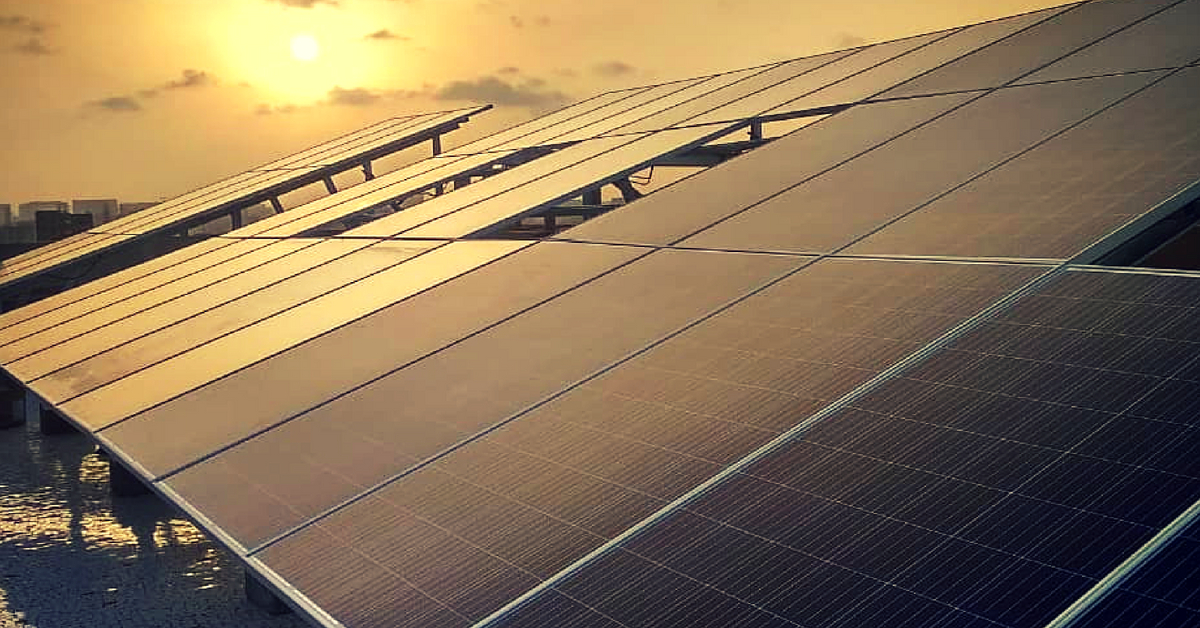Mumbai Society Uses the Sun to Power 81% of Its Needs, Will Save Rs 1.34 Lakh/Year!
The J and K wings of the housing complex have installed a rooftop solar system. With 34 panels spread across 1000 sq ft on the rooftop, this system has the capacity of generating 11.05-kilowatt power (kWp).

Did you know Mumbai has the potential to generate 1.72 Giga Watt Peak (GWp) solar energy through solar panels atop buildings?
If this becomes a reality, the city could fulfil half of its power requirements even in the scorching summers that peak at a whopping 3.6 GW!
A study by the Indian Institute of Technology, Bombay, reveals that the city presently generates only 5 Megawatt Peak (MWp), which is a meagre 0.3% of its potential.
While most residents continue to be sceptical about investing in solar energy for their power requirements due to high costs, one Mumbai housing complex is setting the trend.
Mulund Darshan Housing Complex has taken one step forward to harness solar energy to fulfil 81% of its electricity needs.

According to a Hindustan Times report, the J and K wings of the housing complex have installed a rooftop solar system. With 34 panels spread across 1000 sq ft on the rooftop, this system has the capacity of generating 11.05-kilowatt power (kWp).
This generated power will be used to light up common areas including lifts, staircase lightings, and water pumps for the two wings.
The solar grid is expected to generate approximately 16,900 units in a year and 45-50 units per day. A regular 2BHK in Mumbai consumes 10-12 units of electricity per day.
The housing complex has a net metering policy in place which will connect the solar grid system to the electricity grid.
Balasubramaniam, a resident, told the publication, “Units generated from the solar system will be utilised, and the rest will be sent back to the grid. Any additional units required are taken from the grid. This way, at the end of the year, we pay only for the ‘net’ units consumed.”
The private company behind the installation, Avishakti Rooftop Solar reveals that the system will help the society mitigate up to 15.30 tonnes of carbon dioxide (CO2) emissions per year.
Besides, it will help save ₹1,34,000 annually!
The society pays about ₹14,166 per month at ₹7.9 per unit across five metres at the moment. The solar power system will drastically cut this bill down to ₹2,500 per month by combining all metres at ₹10 per unit.
“This means, an 82% drop in electricity expenditure,” Animesh Manek, Founder and Director, Avishakti Solar, told HT.
The housing society spent over ₹7,75,000 (including GST) to install the solar project, which as per the company, would be recovered in four-and-a-half years.
While the members of the society agree that the initial cost of the installation was a bit high, they add that their detailed discussions with the Avishakti team helped them understand the benefits of the system, including its durability, lifespan, and power generation mechanism.
“We figured that apart from recovering costs, the system will run for 25 years and demands no maintenance. It made sense for us,” said KR Ramakrishnan, society member.
While all the paperwork is complete, the Avishakti team is hoping that at a 30% subsidy, the society will get ₹1,83,000 from the state.
“Therefore, the recovery cost for installation will drop by one-and-half years. However, new rules are being promulgated by MNRE for fresh installations. Other societies planning on adopting solar need to check the updated guidelines,” Animesh told HT.
Read more: CAG of India Climbs into Toilet Pit, Empties Human Compost with Own Hands!
With non-renewable resources depleting fast, Mulund Darshan Society’s step to adopt solar energy and change their lifestyle is certainly commendable.
“We are constantly striving to include environment-friendly ways of living and have taken several steps to encourage our residents to be more responsible towards our ecosystem. Adopting solar power is a much-appreciated inclusion in that. We believe steps taken like these make all the difference,” concludes Balasubramaniam, with pride.
(Edited by Shruti Singhal)
Like this story? Or have something to share?
Write to us: [email protected]
Connect with us on Facebook and Twitter.
NEW: Click here to get positive news on WhatsApp!
This story made me
- 97
- 121
- 89
- 167
Tell Us More
We bring stories straight from the heart of India, to inspire millions and create a wave of impact. Our positive movement is growing bigger everyday, and we would love for you to join it.
Please contribute whatever you can, every little penny helps our team in bringing you more stories that support dreams and spread hope.



















